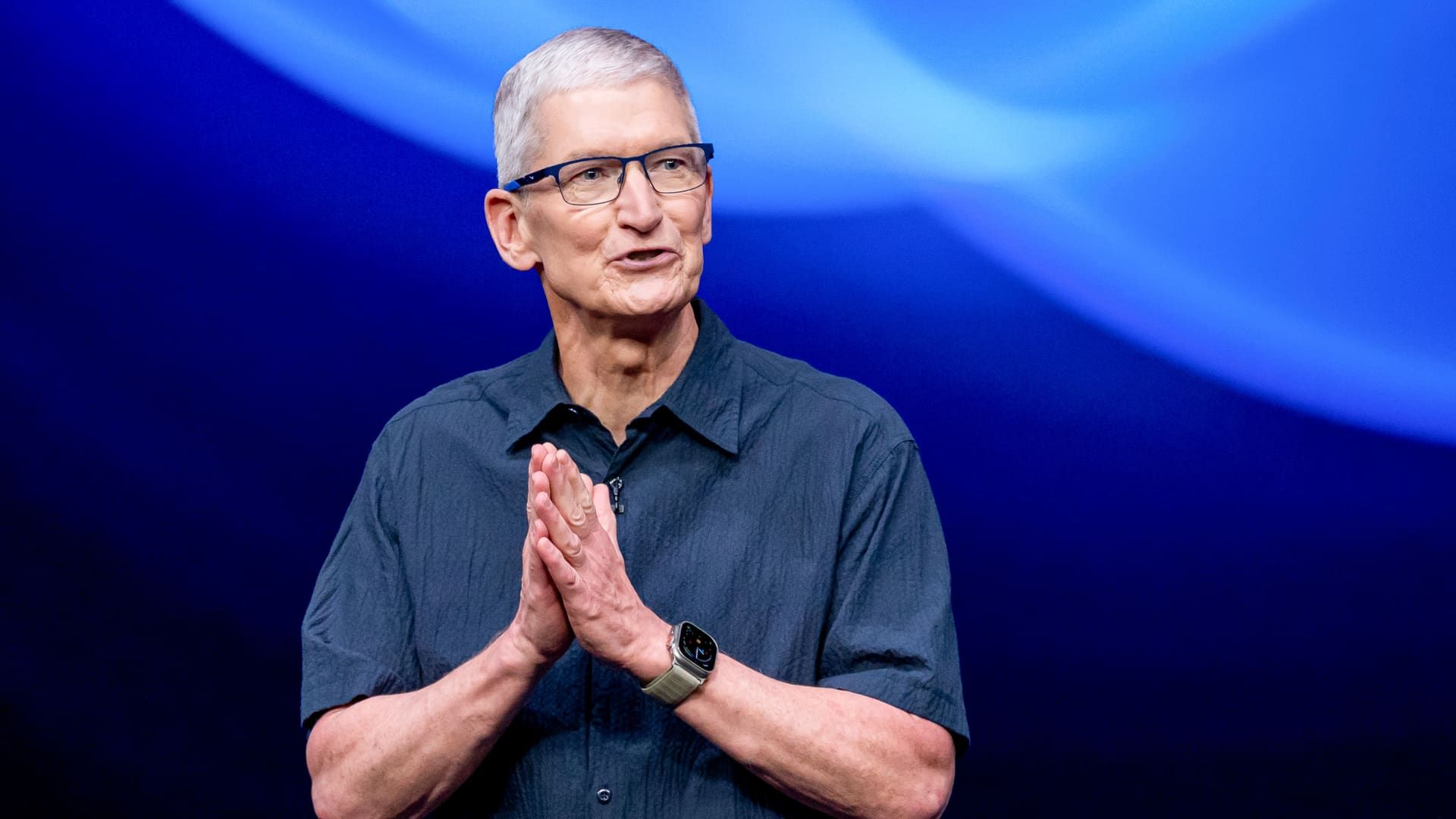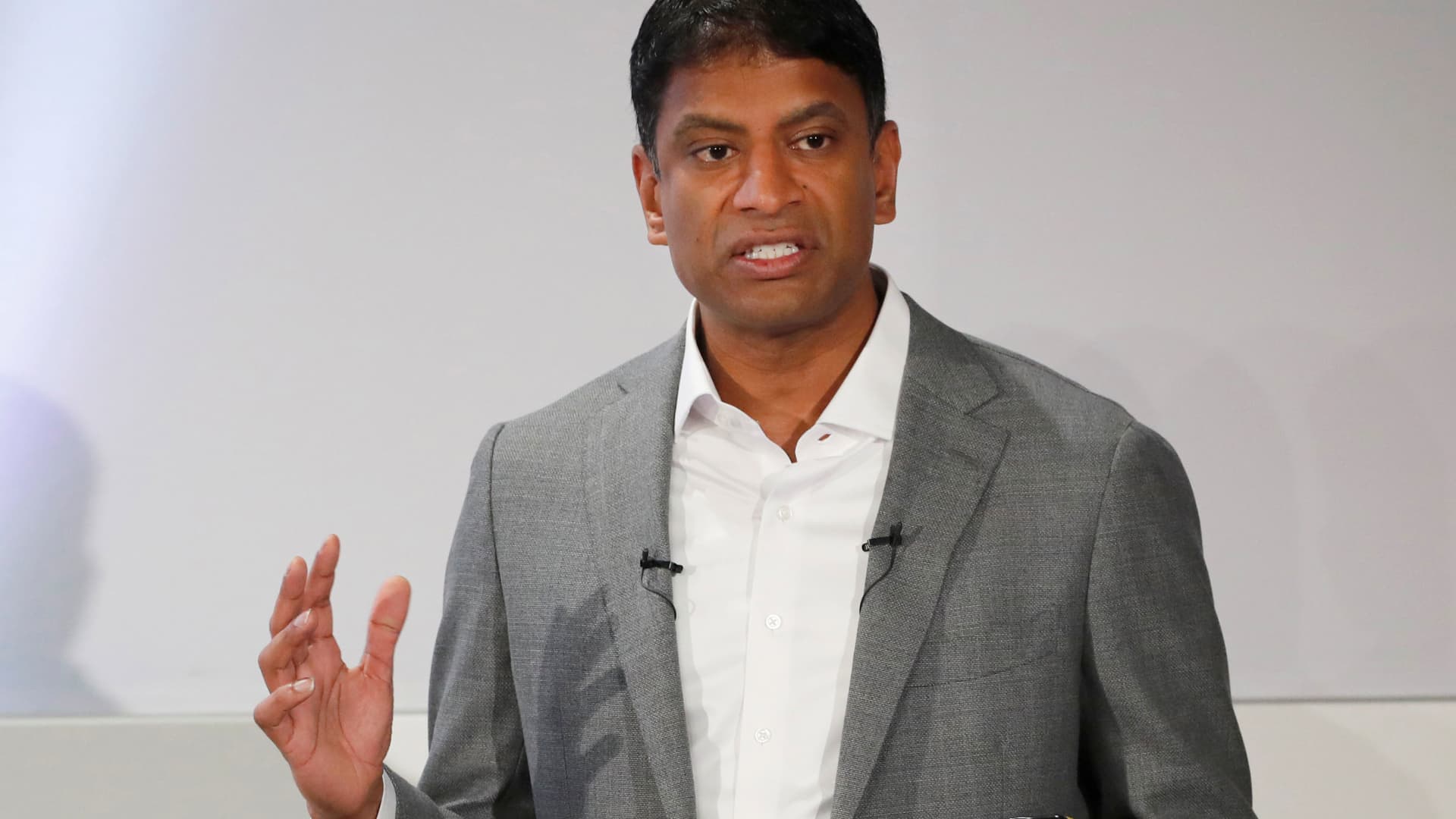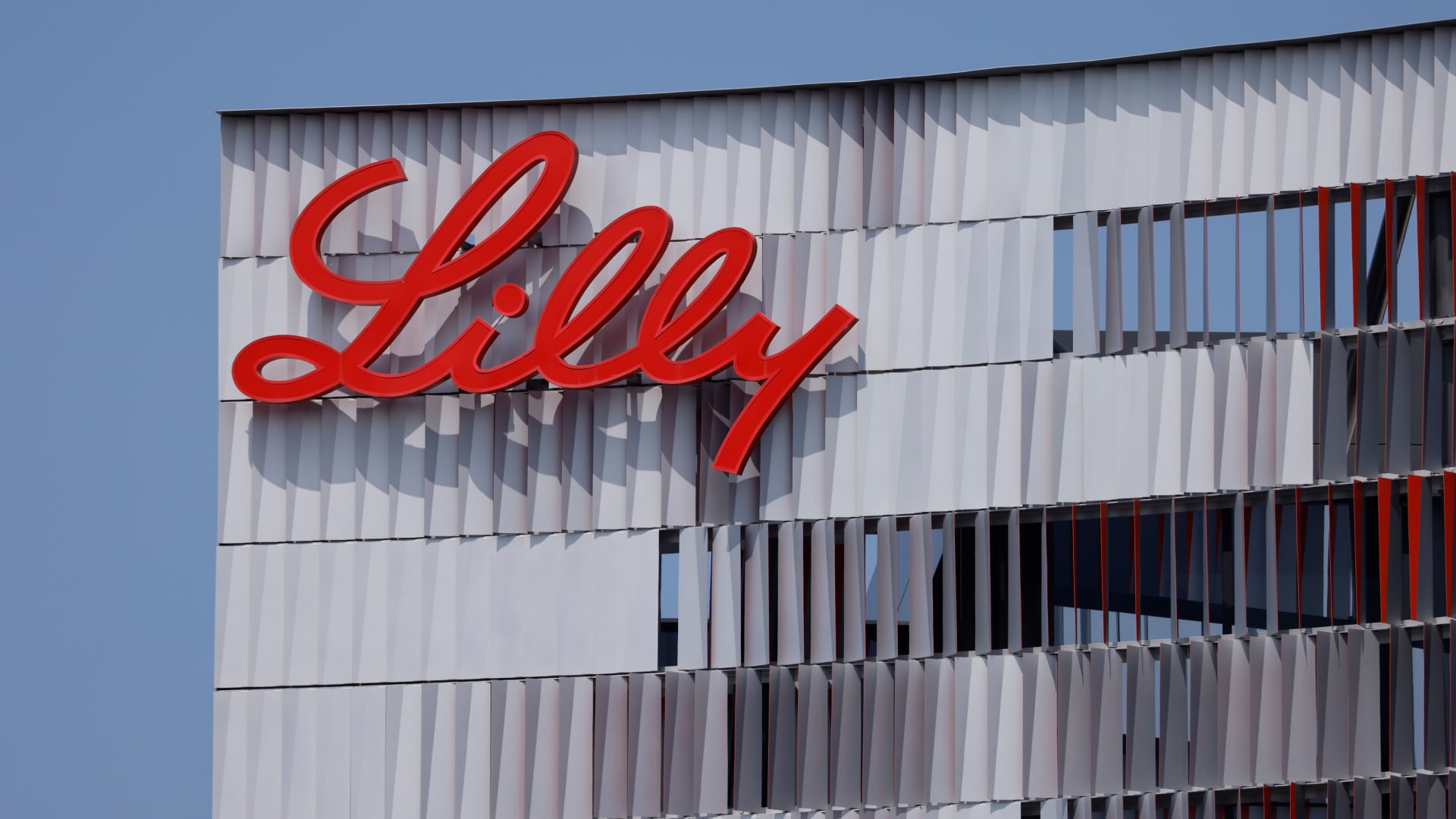Apple Inc. CEO Tim Cook during an event at the Apple Park campus in Cupertino, California, U.S., Monday, Sept. 9, 2024. Apple Inc. unveiled a new version of its smartwatch with a larger display and the ability to detect sleep apnea, part of an event Monday that will also include the iPhone 16 smartphone. Photographer: David Paul Morris/Bloomberg via Getty Images
Bloomberg | Bloomberg | Getty Images
The U.S. Food and Drug Administration on Monday clear AppleApple's new sleep apnea detection feature is on the way, meaning it's coming to the Apple Watch Series 9, Series 10, and Ultra 2 later this month.
Sleep apnea is a sleep disorder that causes a person's breathing to stop and start repeatedly throughout the night. The condition affects more than 30 million people in the U.S., but only about 6 million are diagnosed, according to the American Medical Association. If left untreated, sleep apnea can cause fatigue and lead to more serious health problems, such as heart problems, high blood pressure and type 2 diabetes.
“We're so excited about the incredible impact this feature can have for the millions of people living with undiagnosed sleep apnea,” said Dr. Sumbul Desai, Apple's vice president of Health, in the feature's launch video.
Apple's sleep apnea detection feature is the company's latest attempt to position its wearables as a cheaper, simpler alternative to many existing health devices and tests. And the sleep disorders market could prove lucrative.
For example, to screen for sleep apnea, patients typically participate in a test at home or in a lab where they are monitored overnight. Prices vary depending on insurance coverage, but the lab test costs an average of $3,000, according to a 2022 study published in the Journal of Primary Care & Community Health.
At-home tests are often less expensive, but can still cost hundreds of dollars. For example, Sleep Doctor's at-home sleep apnea test costs $189. Apple's newest watch, the Series 10, starts at $399.
Apple's sleep apnea detection feature is “potentially a game changer” for patients who have been reluctant to get tested, said Dr. David Kuhlmann, a physician who has treated sleep disorders for nearly two decades in Missouri. Kuhlmann also serves on the board of directors of the American Academy of Sleep Medicine, which is a professional society for physicians specializing in sleep medicine.
Kuhlmann said the feature could be especially helpful for patients who sleep alone and believes many people will be surprised to discover they show signs of sleep apnea.
Still, Kuhlmann said users should approach Apple's sleep apnea data with some caution, as the readings could be erroneous. He said it's unlikely that insurance companies will start paying for sleep apnea therapies, such as CPAP machines, based solely on Apple Watch data, so it's important for patients to follow up with their health care providers to get an official diagnosis.
“People need to be diagnosed in order to be treated,” Kuhlmann told CNBC in an interview.
Kuhlmann said the feature will likely lead to an increase in visits to health care providers, which could ultimately reduce costs for the U.S. health care system overall. Ideally, if patients catch sleep apnea earlier, they can avoid paying for treatments for more serious conditions down the road.
“By discovering that they have these underlying sleep disorders and getting them treated, they could potentially save money and improve their quality of life.”
How it works
Apple Watch Series 10 sleep apnea alert.
Apple Inc. Company
Apple's sleep apnea detection feature works by analyzing a new metric the company calls “breathing disturbances.” Apple Watch identifies breathing disturbances by using an accelerometer that measures movements in the wrist that indicate disruptions to normal breathing patterns.
Users can view their nightly metrics in the Health app, where they will be categorized as either “elevated” or “not elevated” — meaning normal. Apple will analyze this breathing disturbance data once a month and notify people if they show “consistent signs” of severe or moderate sleep apnea. Users can view their data over a period of one month, six months, or one year.
The Apple Watch Series 10 supports a battery life of 18 hours, so people who are interested in using this feature will likely need to charge their device during the day.
Apple can also generate a report that users can take to their doctors to discuss next steps. The report includes three months of respiratory disorder data as well as additional information, according to the company. Users can also access educational materials within the Health app.
Apple said the notification algorithm was developed using “a comprehensive dataset of clinical-grade sleep apnea testing” and that the feature was validated in a clinical study.
“Now I'm looking forward to having an Apple [Watch] “So I can test it myself,” Kuhlmann said.












